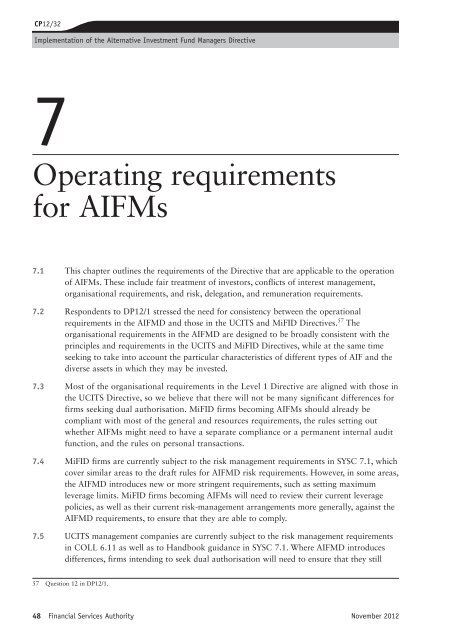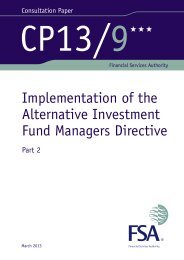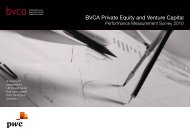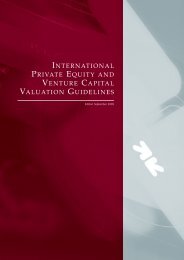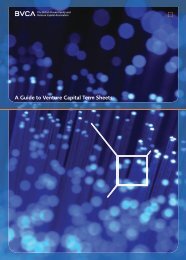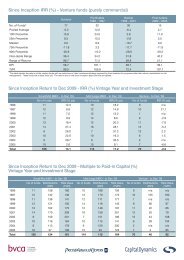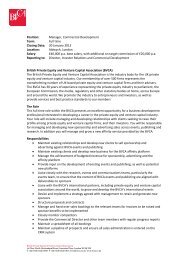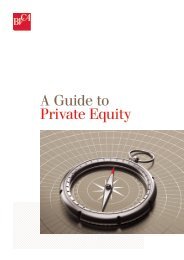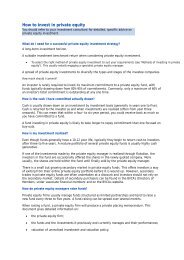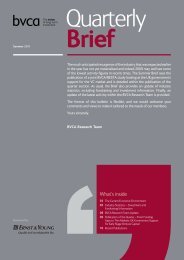CP12/32: Implementation of the Alternative ... - BVCA admin
CP12/32: Implementation of the Alternative ... - BVCA admin
CP12/32: Implementation of the Alternative ... - BVCA admin
Create successful ePaper yourself
Turn your PDF publications into a flip-book with our unique Google optimized e-Paper software.
<strong>CP12</strong>/<strong>32</strong><br />
<strong>Implementation</strong> <strong>of</strong> <strong>the</strong> <strong>Alternative</strong> Investment Fund Managers Directive<br />
7<br />
Operating requirements<br />
for AIFMs<br />
Annex X<br />
7.1 This chapter outlines <strong>the</strong> requirements <strong>of</strong> <strong>the</strong> Directive that are applicable to <strong>the</strong> operation<br />
<strong>of</strong> AIFMs. These include fair treatment <strong>of</strong> investors, conflicts <strong>of</strong> interest management,<br />
organisational requirements, and risk, delegation, and remuneration requirements.<br />
7.2 Respondents to DP12/1 stressed <strong>the</strong> need for consistency between <strong>the</strong> operational<br />
requirements in <strong>the</strong> AIFMD and those in <strong>the</strong> UCITS and MiFID Directives. 57 The<br />
organisational requirements in <strong>the</strong> AIFMD are designed to be broadly consistent with <strong>the</strong><br />
principles and requirements in <strong>the</strong> UCITS and MiFID Directives, while at <strong>the</strong> same time<br />
seeking to take into account <strong>the</strong> particular characteristics <strong>of</strong> different types <strong>of</strong> AIF and <strong>the</strong><br />
diverse assets in which <strong>the</strong>y may be invested.<br />
7.3 Most <strong>of</strong> <strong>the</strong> organisational requirements in <strong>the</strong> Level 1 Directive are aligned with those in<br />
<strong>the</strong> UCITS Directive, so we believe that <strong>the</strong>re will not be many significant differences for<br />
firms seeking dual authorisation. MiFID firms becoming AIFMs should already be<br />
compliant with most <strong>of</strong> <strong>the</strong> general and resources requirements, <strong>the</strong> rules setting out<br />
whe<strong>the</strong>r AIFMs might need to have a separate compliance or a permanent internal audit<br />
function, and <strong>the</strong> rules on personal transactions.<br />
7.4 MiFID firms are currently subject to <strong>the</strong> risk management requirements in SYSC 7.1, which<br />
cover similar areas to <strong>the</strong> draft rules for AIFMD risk requirements. However, in some areas,<br />
<strong>the</strong> AIFMD introduces new or more stringent requirements, such as setting maximum<br />
leverage limits. MiFID firms becoming AIFMs will need to review <strong>the</strong>ir current leverage<br />
policies, as well as <strong>the</strong>ir current risk-management arrangements more generally, against <strong>the</strong><br />
AIFMD requirements, to ensure that <strong>the</strong>y are able to comply.<br />
7.5 UCITS management companies are currently subject to <strong>the</strong> risk management requirements<br />
in COLL 6.11 as well as to Handbook guidance in SYSC 7.1. Where AIFMD introduces<br />
differences, firms intending to seek dual authorisation will need to ensure that <strong>the</strong>y still<br />
57 Question 12 in DP12/1.<br />
48 Financial Services Authority November 2012


